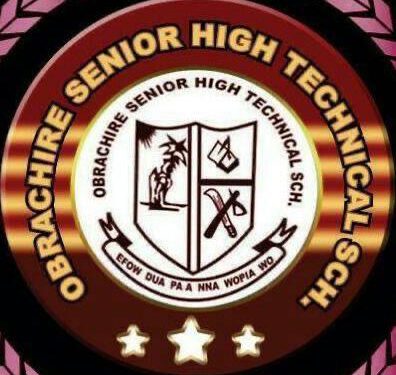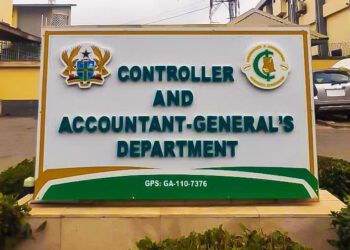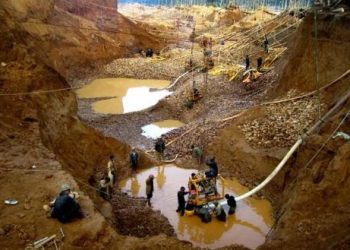The leadership of Obrachire Senior High Technical School (OSTECH) is in vigorous arrangement to observe its 33rd anniversary, 3rd speech, and prize-giving day.
In line with this, its old student association, nicknamed OOSA, has started a sickbay project that will help cater for the health needs of the institution and is expected to be completed in the nearest possible time.
The event is slated for March 23, 2024, on the theme of reflecting on three decades of climbing academic heights.
Below is a brief history of the school.
Obrachire Senior High Technical School (OSTECH) was established in January 1991, when the government at the time, the Provisional National Defence Council (PNDC), saw the need to bring education to the doorstep of every Ghanaian child during the implementation of the 1987 Educational Reforms. It was the most comprehensive educational reform under the PNDC regime.
The government policy was that a senior secondary school should be established in every local area or community in the country, and Obrachire was chosen as the site for the school for the Awutu people.
Awutu local area was formerly under Winneba Municipality, and an education committee was set up by the Winneba Assembly to go around the Awutu local area and assess the possibility of establishing a senior high school in an Awutu town.
Obrachire was found to be the most ideal place to site the school because of the following:
1. World Vision International, an NGO, had adopted the Obrachire community and was assisting them in all areas of development. They had already built a three-story classroom block. They had also built a nursery with three rooms and offices on that same compound. World Vision International changed the location of the junior high school by building a new block for the school in town. Thus, the old JHS compound provided the needed structures for the start of the senior high school.
2. The Obrachire community also had in stock large quantities of building materials like cement, iron rods, sand, and stones, all provided by World Vision International, which could be used to put up more structures.
3. Some prominent members of the royal family of Obrachire, notably two sisters, namely the late Maame Koram and the late Maame Serwa Tetteh, personally donated large tracts of land, which, added to those of other families, were about 58.4 acres, all for the purpose of the school.
4. World Vision International had instilled communal spirit in the people of Obrachire, who were relied upon to provide communal labour to put up more structures for the school.
The education search committee therefore found it expedient to site the school in Obrachire because it was the only town in Awutu that had all that was needed for the school to take off.
Mention should also be made of some Obrachire indigenes whose efforts in the establishment of the school deserve commendation, namely the late Dr. Emmanuel Ababio Tetteh, the late Simeon Pentu Tetteh, Mr. Paa Nii Obo, who gave two rooms in his house to the first headmaster to stay for free, Nai Obeng (Sadiku), etc.
The school was opened in January 1991 with an initial enrollment of 75 students and a teaching staff strength of four (4), including the headmaster. There were two part-time teachers. The school started with three (3) academic programmes, namely Agricultural Science, Technical, and Vocational.
The school operated a day and hostel system to attract more students from the catchment area. This was so because a greater number of the students could not afford the boarding fees. The hostel system, however, posed a serious challenge in the area of student discipline and had to be phased out after the school was granted full boarding status in 2010.
The school has four (4) houses, which were formerly named House 1, House 2, House 3, and House 4. In 2013, the houses were renamed to honour the first headmaster (Mr. Frank Eshun), the stool of Obrachire town, the stool of Awutuman Hene, and the Tetteh family.
House 1: Eshun House
House 2: Abosompim House
House 3: Whettey House
House 4: Tetteh House
World Vision International (WVI) continued to contribute to transforming the image of the school. They later provided the following:
1. Four (4) bungalows
2. Eleven (11) electric poles to connect the school to the national grid
3. A three-unit classroom block
The government also provided:
1. Two (2) bungalows for the head and assistant
2. Administration block: staff room, two (2) offices, and secretary’s office
3. A library
4. A workshop
5. A six-unit block, now housing the main ICT lab, visual arts studio, library, and three (3) other classrooms.
6. Place of convenience for boys and girls
7. A six-unit classroom block, now called a new block, with staff rooms and washrooms for both staff and students (GET-Fund)
8. A six-unit classroom block, now called Nzulezu New Block (GET-Fund)
9. A two-story dormitory block. The construction of which has stalled since 2012.
The PTA also built:
1. A two-room classroom block that has been converted into a girl’s dormitory
2. A four-room classroom block with offices being used by the assistant head of administration, senior housemaster/mistress, guidance and counselling coordinator, and sick bay.
3. A pavilion.
Plan Ghana also built a science block for the school at the new site,
The World Bank built three (3)-unit classroom blocks (Nzulezu old block).
Efforts made by the school through IGF
1. A two-bedroom bungalow for the assistant head
2. Corn and flour milling machines
3. Construction of the kitchen
4. Construction of girls dormitories
5. Construction of a 2-unit classroom block, now being used as ICT labs, etc.
Secondary Education Improvement Programme (SEIP) (2018–2021)
Notable projects include the construction of an entrance gate and security post, a fence wall, the refurbishment of the ICT lab, in-service training for teachers, etc.
The school anthem was composed by Mr. Amegbor, a former mathematics and music teacher of the school, while the late Mr. Nyarko, a former Fante teacher, provided the lyrics.
The motto of the school, ‘Efow Dua Pa a Nna Wopia Wo’, is the motto of Obrachire town, which was adopted by the school at its inception. The crest has three parts, with the left side showing a boy climbing a tree, meaning that in life, aim high to reach the sky.
The right-hand side is divided into two parts: the upper part shows a compass on a book depicting the serious academic work of the school, and the lower part displays a hoe and a machete, signifying the agricultural potential of Obrachire town. The motto of the school is engraved at the bottom of the crest.
The first Board of Governors for the school was inaugurated in 1994, with Ms. Ethel Persis Araba Amissah, a home economics lecturer and former head of department, as chairperson.
HEADS SINCE 1991
1. Mr. Frank Eshun, 1991–2009.
2. Rev. Dr. Helena Hope Araba Grahl, 2009–2012
3. Mr. Kwami Alorvi, 2013–2015
4. Mr. Chris Adu Yeboah, 2016–2018
5. Mrs. Gifty Andoh, 2019–2020
6. Mrs. Kate Selina Conduah, 2021 to date
As we look back and reflect on the way to the launch of the 33-year milestone, we give glory to God and honour the men and women who have carved a niche for others to follow this path of success. Long live OSTECH.
Story: Daniel Asuku
*****
Never miss out on the news. Get your valuable breaking news and other vital content by following The Sikaman Times on WhatsApp Channel
*****

















